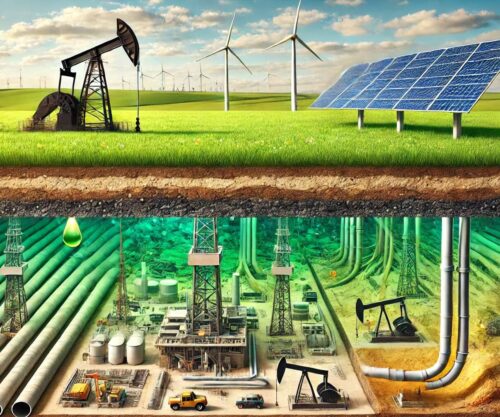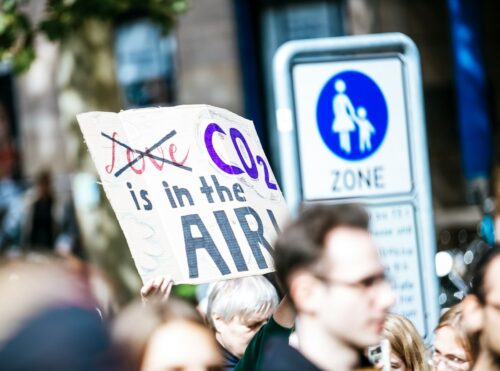
A recent Associated Press (AP) article titled “Scientists shielding farming from climate change need more public funding, but they’re getting less” has been published by numerous media outlets in the past few days. [emphasis, links added]
The AP’s claim is false, being flatly contradicted by actual agricultural performance data.
Evidence clearly shows farmers aren’t being overwhelmed by climate change; rather, the vast majority of crops are benefitting from longer growing seasons and higher CO2 levels, inducing record-setting crop yields.
The AP’s article suggests that climate change is outpacing farmers’ ability to adapt and that the only solution is more federal funding for speculative research.
That assumption is refuted by real-world data.
As outlined by Climate At A Glance and supported by USDA data, U.S. farmers have repeatedly broken production records in recent years.
Corn, soybean, and wheat yields have all shown long-term upward trends—despite the supposed ravages of climate disruption. This isn’t a matter of opinion; it’s directly measurable, as seen in the figure below.

Meanwhile, as indicated by the graph, while record cereal grain production and yields grew, land-use for cereal grains was declining, proving that agricultural innovation has markedly improved yields.
In the face of the history of science and technological development, Erin McGuire of the University of California-Davis is quoted by the AP as saying, “I don’t think that private industry can replicate how federal funding typically supports early stage, speculative science… because the economics don’t really work.”
Pardon the interruption, but what planet is this thinking from?
The private sector has long been the driver of game-changing innovation—from SpaceX’s reusable rockets to mRNA vaccines, to genetically modified crops, to AI-driven ag-tech.
None of these breakthroughs came from speculative government alone—they were led by entrepreneurs who saw opportunity, not doomsday.
The idea that agriculture is a helpless victim waiting to be rescued by government grants is out of step with the realities of modern farming.
American farmers are using precision planting, advanced weather modeling, drought-tolerant seed hybrids, GPS-guided equipment, and AI-based pest management—almost all of it developed or commercialized by the private sector.
While the AP article bemoans a drop in federal funding, it completely ignores the vast gains in agricultural productivity made through private innovation and market-driven adaptation.
Even the supposed threats to agriculture from climate change, like drought or extreme weather, aren’t borne out in the data and certainly aren’t translating into declining output.
More than 200 Climate Realism posts demonstrate that crop yields and production have increased considerably during the period of, and partly due to, the recent slight warming.
This is true across continents and countries and for almost every crop one examines. One Climate Realism post, for example, presents data demonstrating that farmland is becoming more productive, not less.
In fact, mild warming and increased atmospheric CO2 are improving crop resilience and accelerating growth—a phenomenon well understood in agronomy, if conveniently ignored in climate alarmist circles. CO2 is not some evil pollutant to plants; it’s literally what they breathe.
Perhaps most frustrating is how the article treats “climate-smart agriculture” as a justification for endlessly growing federal budgets while providing no proof that such fantasy programs, in general, or any specifically identified effort, have produced results farmers actually need.
It’s a classic case of bureaucratic inertia: fund it first, prove it later. The article admits the USDA’s climate-smart initiative is a multi-billion-dollar effort—but where’s the cost-benefit analysis?
Where’s the evidence that yields are better because of these programs and not despite them?
What we’re seeing here is yet another example of narrative-driven reporting masquerading as analysis.
The AP piece cites claims by researchers and bureaucrats and relies heavily on anecdote, avoiding hard data. The story frames reduced public funding as a crisis without providing any evidence, much less definitive proof, that any of this climate funding was necessary to begin with, much less effective.
In closing, it is disappointing—but not surprising—that the Associated Press would publish such a shallow grant-chasing justification for more government spending, all the while ignoring clear, verifiable trends in agricultural success.
America’s farmers are doing just fine without speculative climate programs. It’s time the AP’s reporting reflected that reality.
Top photo by Denley Jones on Unsplash
Read more at Climate Realism



















What about the spraying and it’s effects on soil fertility? Aluminium and Boron, fly ash and more. The dimming of the sun by these lasting chemtrails – this is real and unacceptable. We were never consulted, never asked and this has been accelerated in recent years. More gaslighting from the fourth estate. So now we’re “spray deniers”? Blind? I’ve hundreds of photos of this. We have groups reporting daily from Europe and the USA. And videos, with commentary and the flight numbers for many episodes. Time this hit the headlines.
AP is just like with the rest of the Leftists Globalists M.S. Media Bottom Feeders spreading their leftists Propaganda to us 24/7